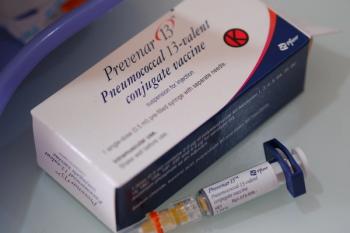
Family and Peers Play Robust Roles in Influencing E-Tobacco Use, Study Finds
Understanding critical risk factors associated with the use of electronic nicotine delivery systems (ENDS) may help mitigate the harm dealt to youths by such devices.
A new study identified key factors highly associated with the use of electronic nicotine delivery systems (ENDS) in efforts to monitor and prevent use-induced risks among youths.1 The use of these devices, including e-cigarettes, e-hookahs, e-pipes, and vape pens, have taken US adolescents by storm throughout the past decade, accounting for the declaration of a youth e-cigarette epidemic by the Surgeon General in 2018.2 Their heightened popularity has put young people’s developmental and psychosocial health at risk as well as has acted as a gateway to the use of other tobacco products.
Respondents in the recent study included 7943 US youths aged 12 years and older who were tobacco-naïve, ie, they have never smoked tobacco products. Within this group, 332 individuals (4.2%) reported using ENDS, 5047 (63.5%) were aged 12 to 14 years, 4066 (51.2%) were male, and 2455 (30.9%) were Hispanic. This study concentrated its analysis between December 2017 to December 2018 and December 2018 to November 2019.
Using a combination of machine learning (ML) algorithms, the study extracted the most significant risk factors among all respondents who were tobacco-naïve between December 2017 to December 2018 and used these risk factors to predict their use of ENDS between December 2018 to November 2019.
The results of the study found associations with the top 10 variables identified by ML techniques and ENDS use status. These included the likelihood of using ENDS if offered by a best friend, number of best friends using e-cigarettes, household tobacco usage, curiosity about ENDS use, future intention to use ENDS, grade level, total average weekly earnings, GMI, perceptions of tobacco product safety, and English writing proficiency (parent respondent). (Figure).
The top 3 variables receiving the highest mean SHAP values, computed to explain the contribution of each risk factor to the final model prediction, were the likelihood of using ENDS if offered by a best friend (0.1836), number of best friends using e-cigarettes (0.1667), and household tobacco usage (0.1607). Given their association with family and friend influence, these top variables demonstrate the robust role family and friends play in enable or disenabling ENDS use. Moreover, this new evidence supports similar findings from previous studies.3-5
Authors noted that education by families and schools on the dangers of ENDS may be a powerful tool in thwarting curiosity about ENDS and preventing its use. Monitoring adolescents’ spending habits may be another helpful method to combat ENDS usage, authors continued, because of the connection found between future ENDS use and adolescents’ total average weekly earnings.
Data used in the current study were gleaned from the Population Assessment of Tobacco and Health (PATH) survey, a nationally representative longitudinal survey designed to monitor tobacco use and its health effects among US youths and adults using data regarding demographics, physical and mental health, tobacco use behaviors, tobacco risk perception, and more.6 A collaborative effort between the FDA Center for Tobacco Products and the NIH National Institute on Drug Abuse, the PATH survey began collecting data in 2011 and has since acted as an invaluable tool to monitor the ever-changing landscape of e-tobacco products.
“Given the popularity of ENDS use in the past years, the prominence of these risk factors raises concerns about their potential contribution to the widespread use of ENDS,” the investigators concluded. “Furthermore, these findings also underscored the pivotal role of education in shaping adolescents’ awareness of tobacco-related matters, serving as protective measures against these detrimental products.”
References
1. Le TTT. Key risk factors associated with electronic delivery systems use among adolescents. JAMA Netw Open. 2023;6(10):e2337101. doi:10.1001/jamanetworkopen.2023.37101
2. Links C. Surgeon General’s Advisory on E-Cigarette Use among Youth. Arizona Free Press; 2018.
3. Cavazos-Rehg P, Li X, Kasson E, Kaiser N, Borodovsky J, Grucza RA. Investigating the role of familial and peerrelated factors on electronic nicotine delivery systems (ENDS) use among U.S. Adolescents. J Adolesc. 2021;87:98-105. doi:10.1016/j.adolescence.2021.01.003
4. Audrain-McGovern J, Rodriguez D, Pianin S, Alexander E. Initial e-cigarette flavoring and nicotine exposure and e-cigarette uptake among adolescents. Drug Alcohol Depend. 2019;202:149-155. doi:10.1016/j.drugalcdep.2019.04.037
5. Kong G, Morean ME, Cavallo DA, Camenga DR, Krishnan-Sarin S. Reasons for electronic cigarette experimentation and discontinuation among adolescents and young adults. Nicotine Tob Res. 2015;17(7):847-858. doi:10.1093/ntr/ntu257
6. FDA and NIH study: population assessment of tobacco and health. Accessed November 6, 2023. https://www.fda.gov/tobacco-products/research/fda-and-nih-study-population-assessment-tobacco-and-health
Newsletter
Pharmacy practice is always changing. Stay ahead of the curve with the Drug Topics newsletter and get the latest drug information, industry trends, and patient care tips.























































































































